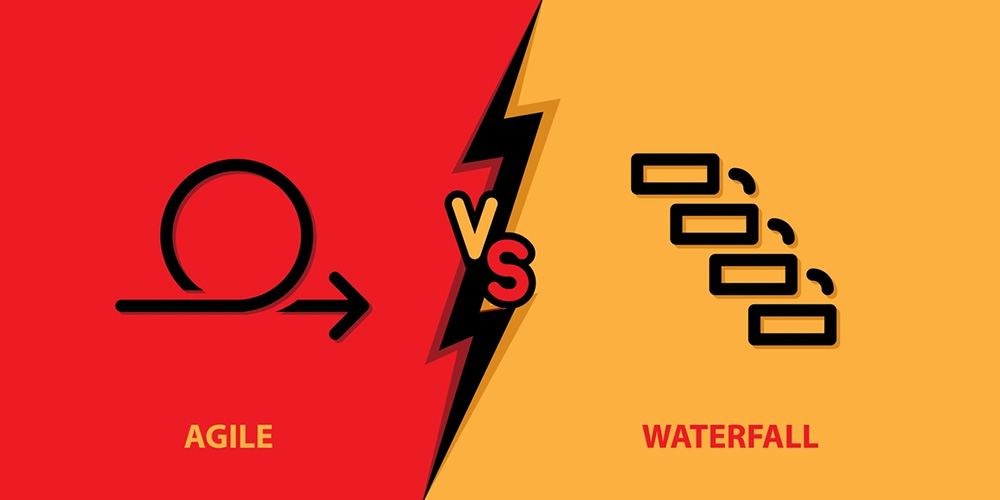Do you find it confusing to choose the right method for managing your projects?
It can be frustrating when you’re unsure whether Agile or Scrum is the best fit for your team. The pressure to deliver results quickly while adapting to changes can leave you feeling stuck.
But don’t worry! This guide simplifies the Agile vs Scrum dilemma. By the end, you’ll confidently choose the right method for your team and projects. With clarity on Agile vs Scrum, you’ll navigate complexities with ease, ensuring efficient and effective project management.
Agile vs Scrum Methodologies: A Concise Overview
When comparing software development methodologies, two prominent approaches stand out: Agile and Scrum. Agile is known for its flexible and collaborative approach, while Scrum is a specific implementation of Agile principles, providing a structured framework for managing and executing Agile projects.
While Agile is a broader philosophy guiding software development, Scrum provides a more structured and defined process within the Agile framework. Agile emphasizes adaptability and collaboration, while Scrum offers clear roles and ceremonies to facilitate effective project management. Both Agile and Scrum aim to deliver high-quality software efficiently, but they differ in their approach and implementation.
What is Agile Methodology?
The Agile methodology is a project management and software development approach that emphasizes flexibility, customer satisfaction, continuous improvement, and high-quality results. Central to Agile is the breakdown of projects into small, manageable units known as iterations or sprints, which are completed in short, repeatable cycles.
A key aspect of Agile is its commitment to teamwork, collaboration, and adaptability throughout the development process. Teams engage in regular reviews of their work, recalibrating plans as needed based on feedback and evolving requirements. This iterative cycle facilitates rapid delivery of project components, empowering teams to swiftly adjust to changes and deliver products that more accurately reflect customer needs.
The Agile methodology is anchored by the Agile Manifesto, which outlines the core values and principles guiding Agile practices. These include prioritizing individuals and interactions over processes and tools, focusing on working software over comprehensive documentation, customer collaboration over contract negotiation, and responding to change over following a plan. This manifesto underpins the Agile approach, promoting a dynamic and responsive development environment.
Pros and Cons of Agile
Agile methodology comes with its own set of advantages and challenges. Here’s a detailed overview of the pros and cons of using the Agile methodology in project management and software development:
Pros:
- High adaptability to changing project requirements
- Continuous feedback loop with stakeholders ensures the product meets user needs
- Faster delivery of functional components
- Enhanced team morale and collaboration
- Better identification and resolution of issues
Cons:
- Less predictability in budget and timeline
- Requires high customer involvement, which may be challenging to manage
- Can lead to scope creep if not properly managed
- Potential for burnout in high-pressure environments
- Dependence on team dynamics
What is Scrum Methodology?
Scrum methodology is a subset of Agile, distinguished by a structured framework that uses predefined roles, responsibilities, and time-boxed events called sprints. This methodology is designed to enhance productivity and adaptability in project management.
Key roles include the Product Owner, responsible for setting priorities; the Scrum Master, who supports the team in following Scrum practices; and the Development Team, which focuses on delivering potentially shippable increments of the product. Sprints, typically lasting 2-4 weeks, organize the workflow into phases of planning, execution, review, and reflection.
Essential Scrum meetings like daily stand-ups, sprint planning, sprint reviews, and retrospectives facilitate continuous communication, allowing for iterative evaluation and adjustments. Scrum methodology supports a dynamic development environment, prioritizing flexibility and stakeholder feedback to quickly adapt to changes.
Pros and Cons of Scrum
Scrum is a specific framework within the Agile methodology that organizes teams and their work around the principles of transparency, inspection, and adaptation. It’s widely used for managing complex software and product development projects. Here’s a detailed look at the pros and cons of using Scrum:
Pros:
- Clear roles and responsibilities
- Regular and structured cadence
- Continuous feedback
- Increased team accountability
- Focus on customer value
Cons:
- Not suitable for all projects
- Requires experienced team members
- Dependency on the Scrum Master’s expertise
- Risk of scope creep
- Requires significant time commitment
The Ultimate Difference Between Agile and Scrum
When comparing Agile and Scrum, it’s important to understand that Scrum is a specific framework within the Agile methodology. Agile is a broad philosophy with many different approaches (like Kanban, XP, Lean, etc.), and Scrum is one of the most popular frameworks that operationalize Agile principles in specific ways. Here’s a comprehensive breakdown of the differences and similarities between Agile as a general methodology and Scrum as a specific application of Agile principles, shedding light on the distinctive features and commonalities between Agile vs Scrum.
Similarities
- Flexibility: Both Agile and Scrum emphasize adaptability and responsiveness to change, making them suitable for projects with evolving requirements.
- Iterative Development: They promote an iterative approach to project management and software development, focusing on incremental progress through cycles (sprints in Scrum).
- Customer Collaboration: Both methodologies stress the importance of customer feedback and involving the customer in the development process to ensure the product meets their needs.
- Continuous Improvement: Agile and Scrum encourage regular reflection and adjustment processes to continually improve the product, the process, and team performance.
Differences
Agile (General Methodology)
- Philosophy: Agile is more of a philosophy and set of values outlined in the Agile Manifesto, guiding various frameworks and practices.
- Flexibility in Practices: Being a broader philosophy, Agile doesn’t prescribe specific processes or roles; it allows teams to choose or tailor practices that best suit their project needs.
- Wide Application: Agile principles can be applied beyond software development, including marketing, business development, and more.
Scrum (Specific Framework)
- Structured Framework: Scrum provides a specific framework with defined roles (Scrum Master, Product Owner, Development Team), ceremonies (Sprint Planning, Daily Standups, Sprint Review, Sprint Retrospective), and artifacts (Product Backlog, Sprint Backlog, Increment).
- Fixed Sprints: Scrum is characterized by fixed-length sprints, typically lasting 2-4 weeks, within which specific work must be completed and made ready for review.
- Scrum Master Role: Scrum includes the role of a Scrum Master, who is responsible for promoting and supporting Scrum by helping everyone understand Scrum theory, practices, rules, and values.
Agile vs Scrum Comparison Table
| Factor | Agile | Scrum |
|---|---|---|
| Focus | Process adaptability and customer satisfaction | Structured, iterative delivery in sprints |
| Flexibility | High, with scope for changes at any stage | Less, within the bounds of sprint goals |
| Suitability | Best for complex projects needing flexibility | Ideal for projects with clear, incremental objectives |
| Roles and Ceremonies | Less prescribed, varies by implementation | Clearly defined roles (Scrum Master, Product Owner, Team Members) and ceremonies (sprints, daily stand-ups, sprint review, sprint retrospective) |
| Implementation | Can be tailored to the team’s needs | Requires strict adherence to Scrum practices |
| Planning and Delivery | Often utilizes adaptive planning and continuous delivery | Relies on fixed-length sprints with specific goals and timelines |
Our methodology for our clients
When it comes to us at Zaigo Infotech, a software development company with over 9+ years in the industry, we’ve learned how to deliver the best results for our clients. Known across India for crafting top-notch software products, we’ve successfully completed over 800 projects in more than 15 different sectors. Our secret? We love using the Agile method, which means we work closely with our clients, change plans easily when needed, and make sure everything is clear to everyone involved.
At Zaigo Infotech, Agile methodology streamlines our software development, enhancing teamwork, efficiency, and client communication. By dividing projects into manageable parts and using sprints for iterative development, we quickly adapt to changes, ensuring the final product aligns with client needs. This approach not only improves our workflow but also guarantees client satisfaction by incorporating their feedback throughout the development process.
For a closer look at how our agile approach has led to success, check out our software development case studies.
Choosing Between Agile and Scrum
The choice between Agile and Scrum depends on your project’s specific needs:
- Use Agile if: You’re looking for a flexible and adaptive philosophy that can be customized to fit various types of projects beyond just software development.
- Use Scrum if: You need a more structured approach with clear guidelines, roles, and procedures to manage complex software projects, and you have the capacity to fulfill the roles of Scrum Master and Product Owner effectively.
Understanding these differences helps organizations select the approach that best suits their specific requirements, team structure, and project goals.
Final Thoughts
In this article on Scrum vs. Agile, let’s remember that while Agile and Scrum both aim for flexible and collaborative project management, they have their own flavors. Agile is like a big umbrella covering many methods, while Scrum is one of its most popular forms. Knowing the difference between Agile vs Scrum helps teams choose the right approach for their projects. By understanding their strengths and weaknesses, teams can blend the best of both worlds for project success. So, it’s not about picking Agile over Scrum or vice versa, but about finding the sweet spot where they work together best.






